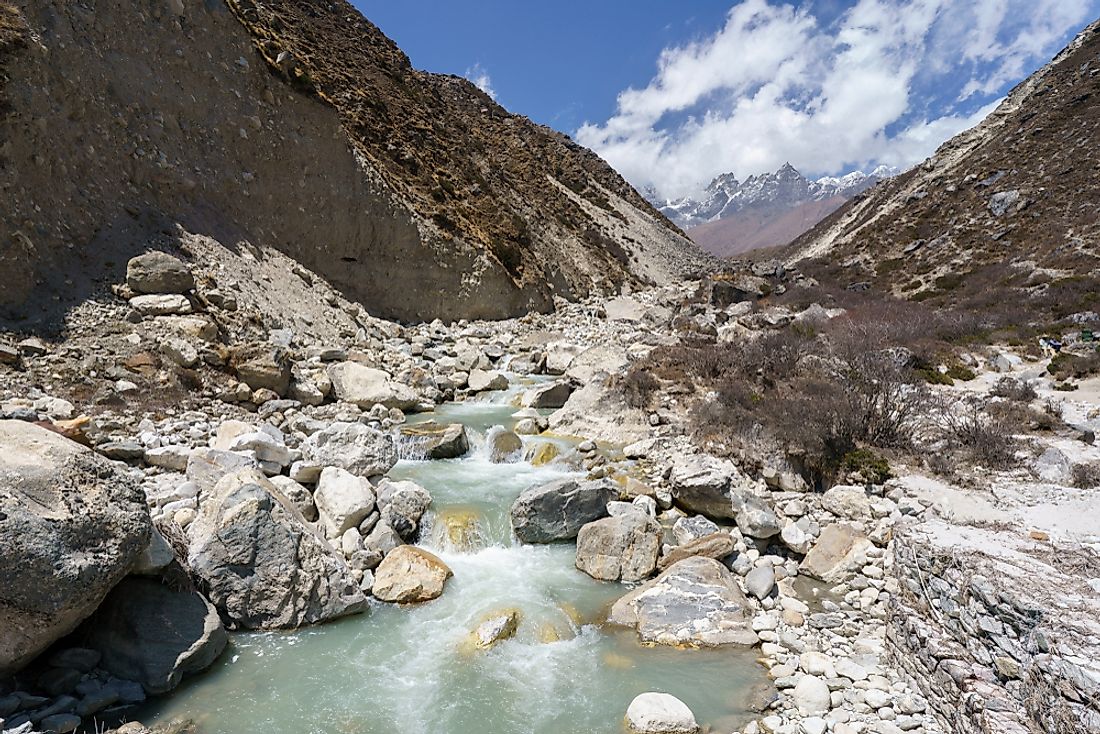Where Do Most Rivers Begin?

Rivers flow from high areas towards low areas, and they have a variety of sources, which contribute to the volume of water in the channel. Rivers support a lot of economic activities such as transport, irrigation, fishing, and human consumption besides providing habitats for aquatic animals. Most rivers have fresh water that is safe for human and animal consumption. Rivers shape the ecosystem of the areas they pass through by direct erosion on the river bed, flooding, and deposition from these rivers. The area from which a river flows is a catchment area. Naturally, catchment areas occur in high areas from which the water flows downwards due to gravity. Rivers may begin from a variety of sources including hills, mountains, lakes, snowmelt, and heavy rainfall. As the river flows downstream, other streams known as tributaries may drain into the main channel adding to the volume of water. Rivers may be seasonal or permanent depending on the capacity and nature of their source. Seasonal rivers flow mainly during the rainy season and dry up in the dry season.
Glaciers
When glaciers melt, the resultant water may flow as streams to form rivers. In mountainous areas with glaciers, the ice may melt and flow downstream as a river. The ice melt may also flow in small streams which then join to become a river.
Springs
Springs are found where underground water seeps on the ground. The water from the spring flows on the ground in the form of a stream, which eventually becomes a river.
Lakes
Lakes and other inland accumulation of water act as sources of some rivers. The Nile River in Africa, for example, originates from Lake Victoria. These lakes may have underground spring or source their water from the inflow of other rivers. The Great Lakes of Michigan are examples of lakes that form river sources.
Mountains
Mountains are high altitude areas that often receive heavy rainfall. The rainfall forms small streams, which eventually become rivers. Most mountains are also forested thus becoming catchment areas for rivers. Mountainous and hilly areas experience heavy rainfall which may collect on the ground as small pools. These pools then release water in small streams which eventually grow into rivers downstream. Some of the rainwater may seep into the ground to form underground water. This underground water may reach the surface as streams or flow out of the ground in streams. Mountainous areas with high precipitation form the sources of permanent rivers. Some rivers, however, dry up in the dry season the water volume decreases due to reduced rainfall in their catchment areas.
Threats To Rivers
Rivers are living components of nature whose life depends upon the conditions in the environment. The catchment areas are therefore vital to the life and continuity of rivers. However, these catchment areas face constant threats to their survival including unsustainable agriculture, urbanization, deforestation, pollution, and climate change. Conditions such as deforestation have led to reduced rainfall, which in turn leads to a shrinking of headwaters, leading to drying up of important rivers. Pollution of river sources such as lakes results in polluted river water, which may pose health risks to its consumers.











